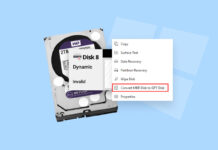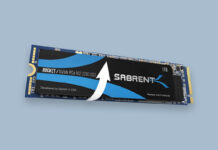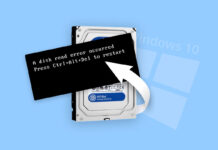 Don’t you feel anxious when you lose some important data? The good thing is, you don’t need to. If you just lost data you had stored on an exFAT drive, you may wonder if exFAT data recovery is possible. Fortunately, it is.
Don’t you feel anxious when you lose some important data? The good thing is, you don’t need to. If you just lost data you had stored on an exFAT drive, you may wonder if exFAT data recovery is possible. Fortunately, it is.
You don’t need to be an expert to recover your data either—it’s a fairly simple process. In this guide, we’ll walk you through the process of performing an exFAT recovery, so you can get your data back in no time.
Table of Contents
What Is exFAT Disk Format?
Extensible File Allocation Table (exFAT) is a file system designed for portable devices. The exFAT file system is an extension of FAT32, and allows larger file and partition sizes like NTFS. It basically gives you the best of both worlds by offering compatibility similar to FAT32, along with larger file and partition sizes of NFTS.
The exFAT file system comes with a set of advantages over other file systems like FAT32 and NTFS. Here are a few things that give exFAT an edge over other file systems:
- Easier file transmission between Windows and Mac: Storage devices that are partitioned as exFAT, such as an external hard drive or flash drive, are useful because they are compatible with both Windows and Mac. For instance, if you format your external hard drive as NTFS (New Technology File System), you can’t write anything on it when you plug it into your Mac. However, Mac has read-write support for the exFAT file system.
- Compatibility with other OSes: You can also format a portable device as FAT32 to make them compatible with both Windows and Mac. In fact, FAT32 offers greater compatibility than exFAT because it’s also compatible with Linux, gaming consoles, and almost any device with a USB port. However, since FAT32 has some limitations, you may still want to use exFAT. Linux doesn’t support exFAT by default, but you can fix this by downloading a few packages. You can also use exFAT on Chrome OS and a few (though not all) gaming consoles.
- Larger partition and file size: A FAT32 partition can’t exceed 8TB and can only store files smaller than 4GB. This is where its successor, exFAT, offers great utility. An exFAT partition has no realistic limits on the size of the partition or individual files. The exFAT file system allows a maximum file size of 16 exbibytes, which is larger than any file in existence.
Why do Hard Drives Suffer exFAT Data Loss?
Understanding why your hard drive suffered exFAT data loss will help you figure out which method will work for you. It will also help you reduce the risk of encountering data loss in the future.
Here are some of the common reasons that can lead to exFAT hard drive data loss:
| Reason for exFAT data loss | Description |
| 🗑️ Inadvertently or knowingly deleting data | When you delete a file, it is usually moved to the Recycle Bin of your drive and can be easily retrieved. However, if the Recycle Bin is bypassed or emptied after deletion, data recovery might be more challenging. |
| 📄 Formatting the drive | If you format an exFAT hard drive without backing up your files, you will lose all data on the drive. This is because formatting an exFAT drive resets its configurations and deletes all the files it contained before. |
| ⚡Sudden interruption in power supply | Data loss due to file corruption can result from any disconnection or unexpected power outage while your exFAT hard drive is processing data. |
| ⚠️ File system corruption | File system corruption can be caused by various factors, such as improper ejection of the drive, software glitches, and hardware issues. Corrupted file systems might make your files unreadable and harder to recover. |
| 💽 Bad sectors on the drive | Bad sectors are areas on your hard drive that are malfunctioning, causing files to become unreadable or corrupted. |
| 🦠 Virus erasing the data | Some viruses or malware can infect your exFAT drive and corrupt or delete your data. Some malicious software can also hide all the files in your drive. |
| 🔨 Physical damage | Significant physical damage to your exFAT drive may result in data loss. Hard drives are sensitive to extreme temperatures, dust buildup, or moisture. In severe cases, your drive may suffer hardware failure or become completely unreadable. |
How to Recover Data From exFAT Formatted Disk
There are a lot of methods to recover data from an exFAT-formatted disk, from using your OS built-in tools to downloading professional data recovery software. In this guide, we will walk you through the simplest and the most effective ways to perform exFAT data recovery.
Method 1:Use Professional Data Recovery Tool
A professional data recovery tool like Disk Drill would make your attempt at data retrieval simple. Disk Drill has powerful scanning algorithms that work well with different file systems, including exFAT. Plus, on Windows, you get up to 500MB of data allocation you can use to recover your files for free.
Here’s how to recover data from exFAT drive using Disk Drill:
- Download the Disk Drill’s setup file, launch it and follow the install wizard’s guidelines to complete the installation.

- Once the installation completes, launch Disk Drill. You’ll see a list of drives with their details. From here, select the device which could be an external hard drive, flash drive, or SD card that you want to recover data from, and click on the Search for lost data to start scan.

- You’ll now see Disk Drill scan your drive for data on your exFAT partition.
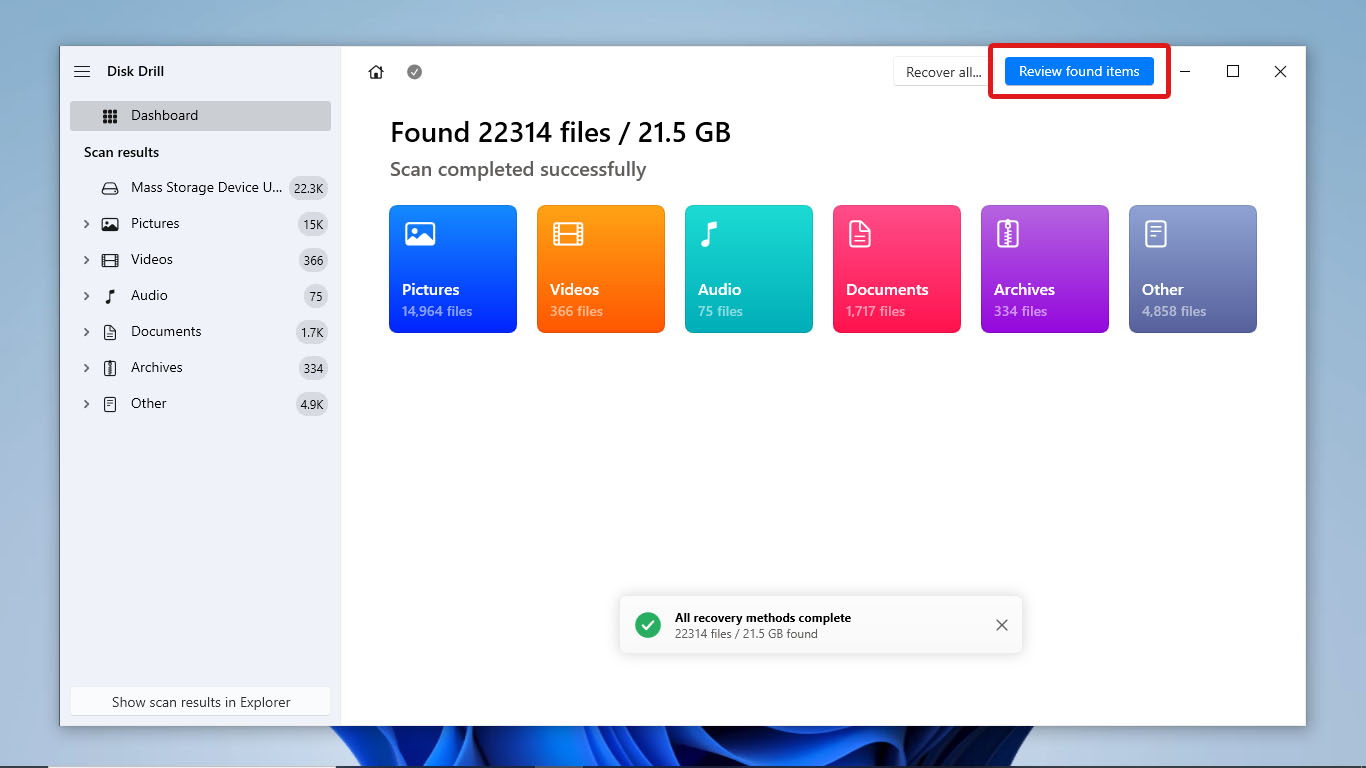
- Once the scan completes, it will show you the list of files that can be recovered. Disk Drill segregates files based on file types, so your documents, pictures, and other types of files will appear in an organized list. You can also preview the file before recovering it by clicking on the eye button so you can make sure you’re recovering the correct files.

- Check the boxes beside files you want to recover. When you’ve selected all files to be recovered, click on the Recover button at the bottom. You’ll now need to select a location where you want to recover the files. Remember to select a location other than the partition you’re recovering from.
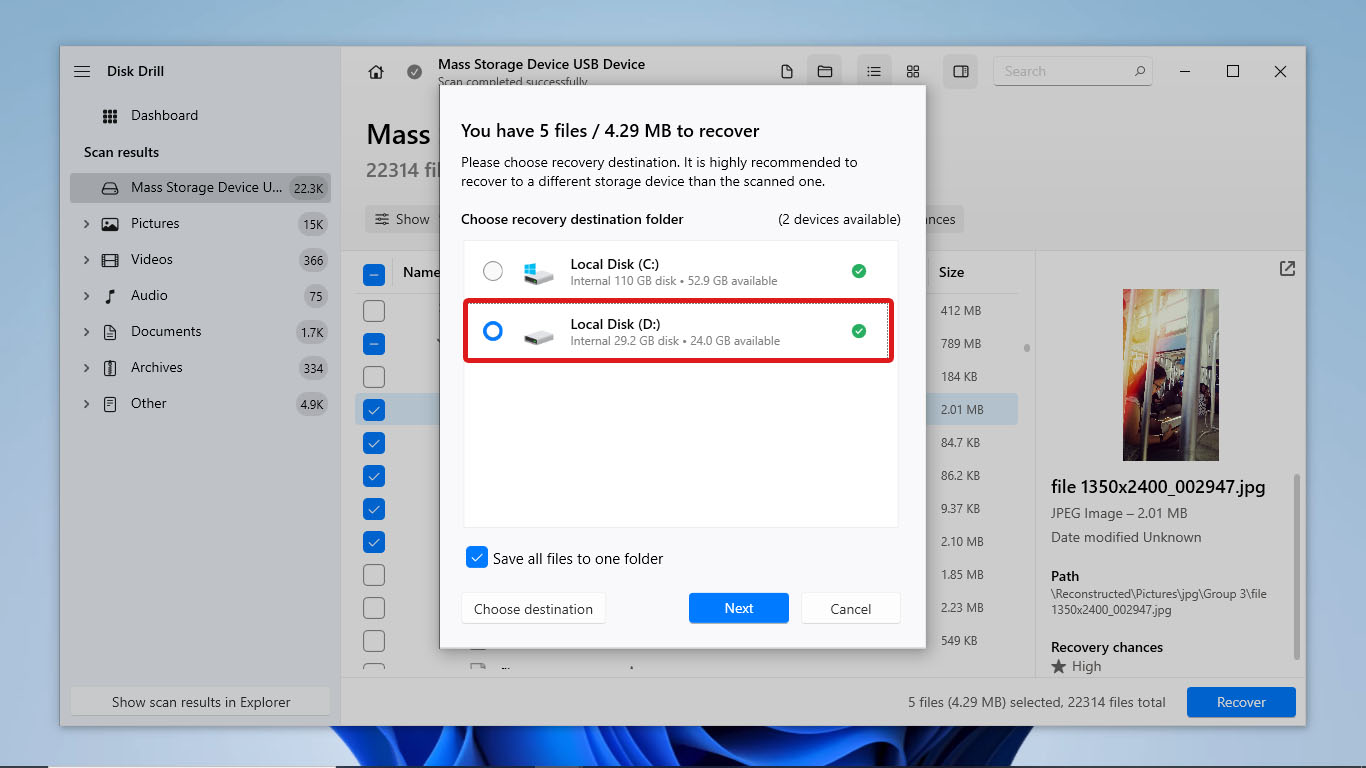
That’s the end of the exFAT data recovery process. Disk Drill will recover the files to your chosen location and you can then access the files from there.
Method 2:Recover Deleted Files from Recycle Bin
If you have accidentally deleted your files, one of the first things you should do is check your Recycle Bin. If the files still exist in the folder, select all the files you want to restore, right-click on them, and Select Restore. This will put all the files you restored back into your exFAT hard drive.

Method 3:Recover Lost Data From Backup
If you are someone who regularly creates a backup of your files, you might have heard of File History on Windows. Once configured, File History can back up your drive and save versions of your files automatically.
If you have turned on File History for your drive, you can follow the steps below to restore your files from its backup. Otherwise, you won’t be able to see any file for recovery in File History.
Restore your files using File History by doing the following:
- Make sure the storage device with your backup is connected to your computer.
- Open File History by going to the Control Panel > File History or searching for “File History” in the Start menu and selecting Restore your Files with File History.

- On the window that opens, select all the files you want to restore and click the green Restore button.
Remember that File History will ask for your permission to overwrite any existing file with its backup. If you want to avoid this, select another location for your recovered files.
Method 4:Use Free Data Recovery Software
Using free data recovery software like PhotoRec might be an option if you don’t want to pay for professional ones. PhotoRec is a completely free data recovery software that works for exFAT-formatted hard drives. It runs on a command line interface and does not require any installation to use.
However, PhotoRec comes short of scanning algorithms and storage device monitoring tools compared to professional data recovery software like Disk Drill. It might also require a little more expertise since it doesn’t have a user-friendly design. Still, it’s a good option for data recovery for all the features it offers for free.
Here’s how to use PhotoRec for exFAT data recovery:
- Go to CGSecurity and download the PhotoRec zip.
- Extract the contents of the zip file. Then, find and open the photorec_win file.
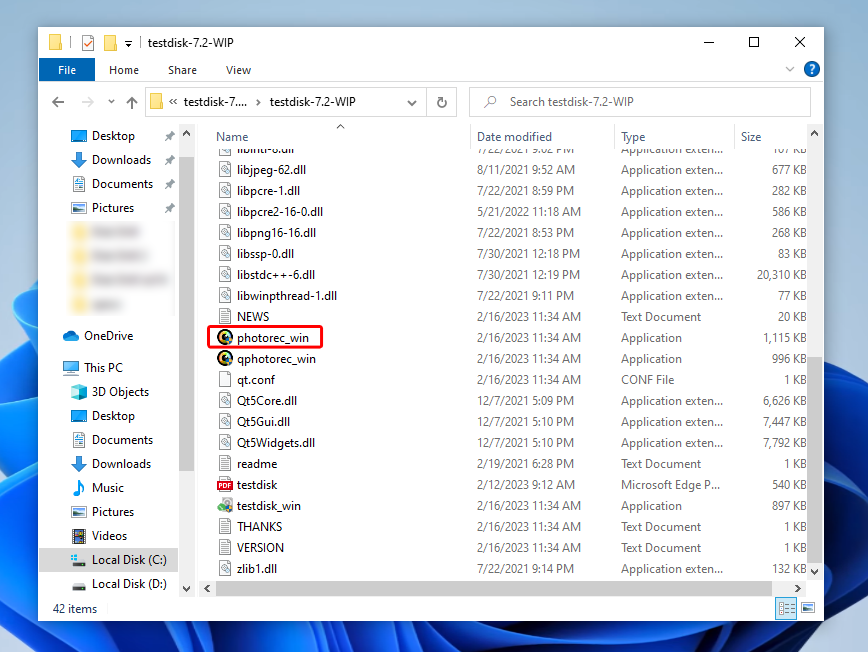
- PhotoRec will open and display the different disk partitions it can scan. It does not show any of the drive’s names, only the partition size along with other details about the available partitions. Check the partition details of your hard drive and match it to the available drives by size and file system.
- Use the arrow keys to choose your drive and press Enter.
 Select the partition you want to scan. Then, press Enter.
Select the partition you want to scan. Then, press Enter.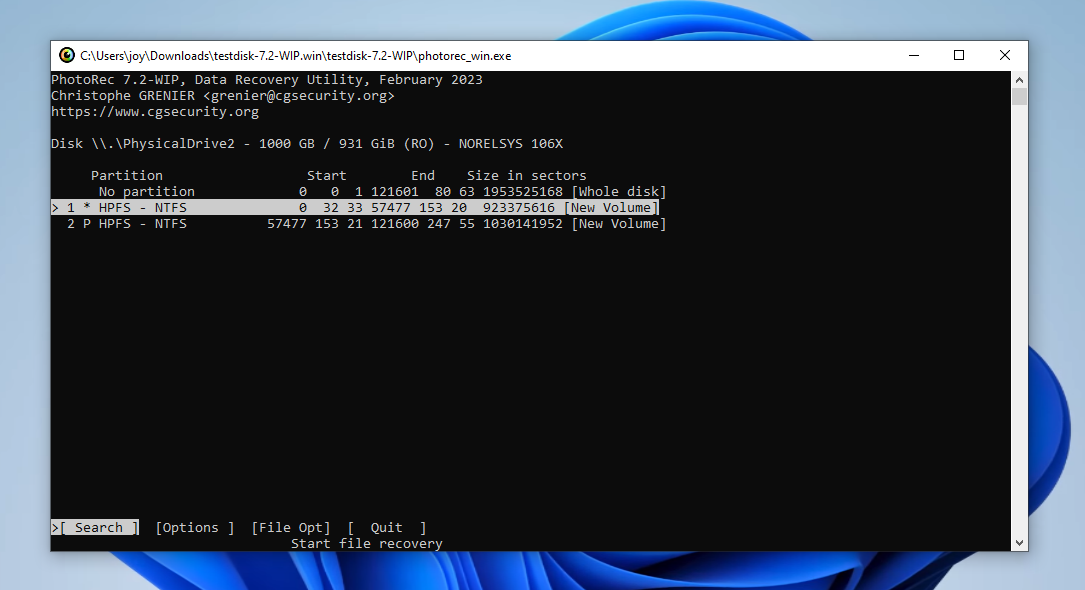
- Choose the file system of your hard drive (exFAT). Then, press Enter.
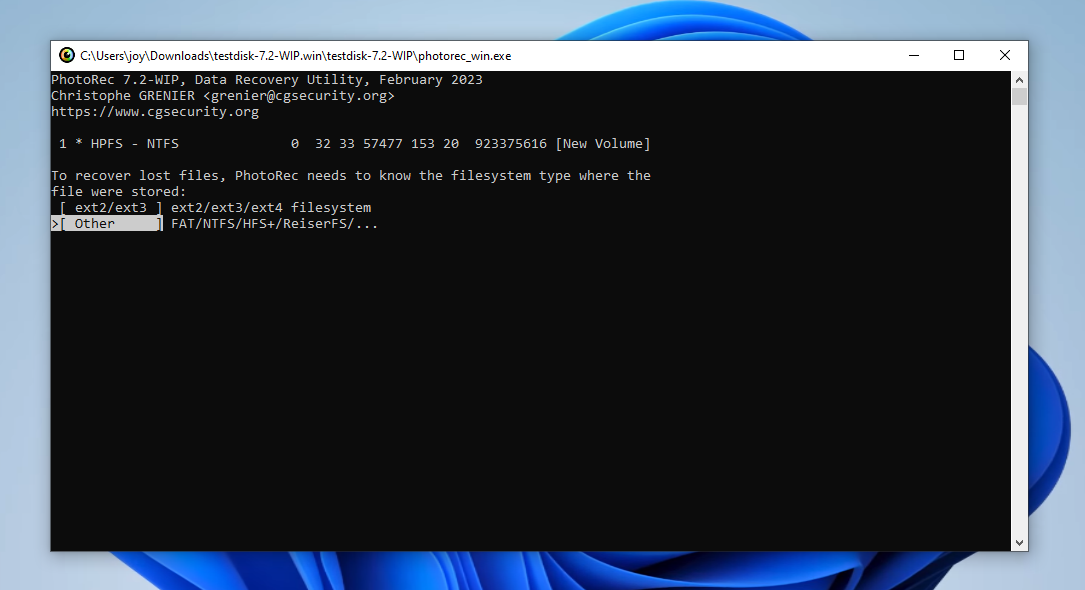
- Select if PhotoRec will scan only the free space on your drive or the whole partition. Next, press Enter.
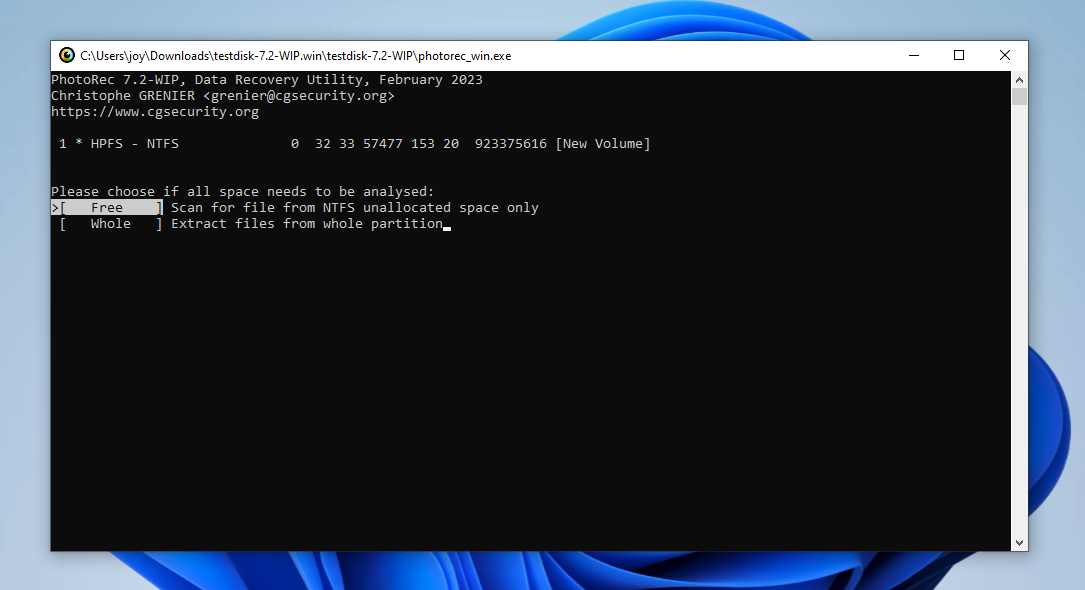
- Select where you want to store your recovered files and press C. The scan should start immediately after that.

After the data recovery process is completed, PhotoRec will notify you with a message saying “Recovery completed.”
FAQ
- Disk Drill (Windows & Mac)
- EaseUS Data Recovery Wizard (Windows & Mac)
- Recuva (Windows)
- TestDisk Data Recovery (Windows & Mac)
- MiniTool Power Data Recovery (Windows)

